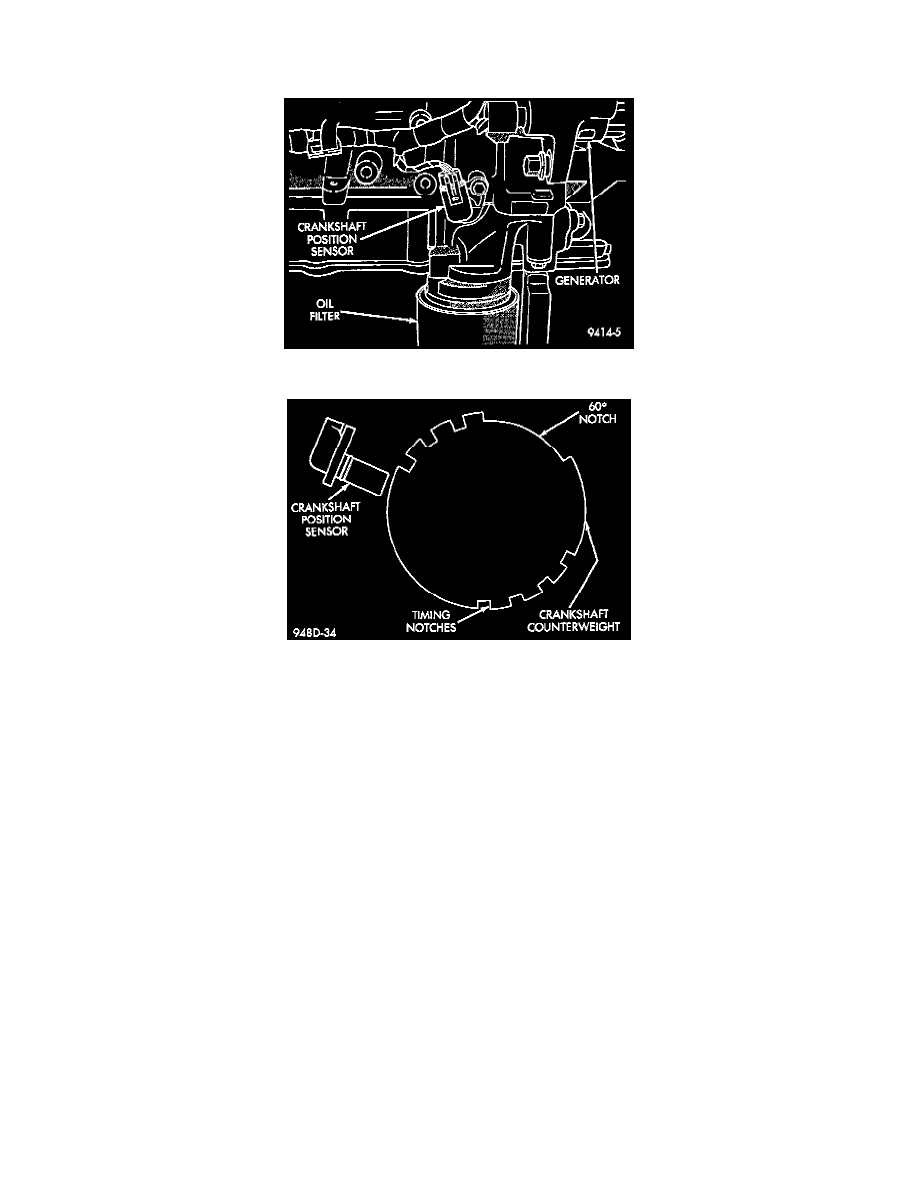Neon L4-2.0L SOHC (1995)

Crankshaft Position Sensor: Description and Operation
Crankshaft Position Sensor Operation
Fig. 15 Crankshaft Position Sensor
Fig. 14 Timing Reference Notches
PURPOSE
The PCM determines what cylinder to fire from the crankshaft position sensor input and the camshaft position sensor input.
From the crankshaft position sensor input the PCM determines engine speed and crankshaft angle (position).
OPERATION
The second crankshaft counterweight has machined into it two sets of four timing reference notches including a 60 degree signature notch (Fig.
14).
The notches generate pulses from high to low in the crankshaft position sensor output voltage.
-
When a metal portion of the counterweight aligns with the crankshaft position sensor, the sensor output voltage goes low (less than 0.5 volts).
-
When a notch aligns with the sensor, voltage goes high (5.0 volts).
-
As a group of notches pass under the sensor, the output voltage switches from low (metal) to high (notch) then back to low.
By counting the pulses and referencing the pulse from the 60 degree signature notch, the PCM calculates crankshaft angle (position). In each group
of timing reference notches:
-
The first notch represents 69 degrees before top dead center (BTDC).
-
The second notch represents 49 degrees BTDC.
-
The third notch represents 29 degrees.
-
The last notch in each set represents 9 degrees before top dead center BTDC.
The timing reference notches are machined at 20° increments. From the voltage pulse-width the PCM tells the difference between the timing
reference notches and the 60 degree signature notch.
-
The 60 degree signature notch produces a longer pulse-width than the smaller timing reference notches.
-
If the camshaft position sensor input switches from high to low when the 60 degree signature notch passes under the crankshaft position sensor,
the PCM knows cylinder number one is the next cylinder at TDC.
